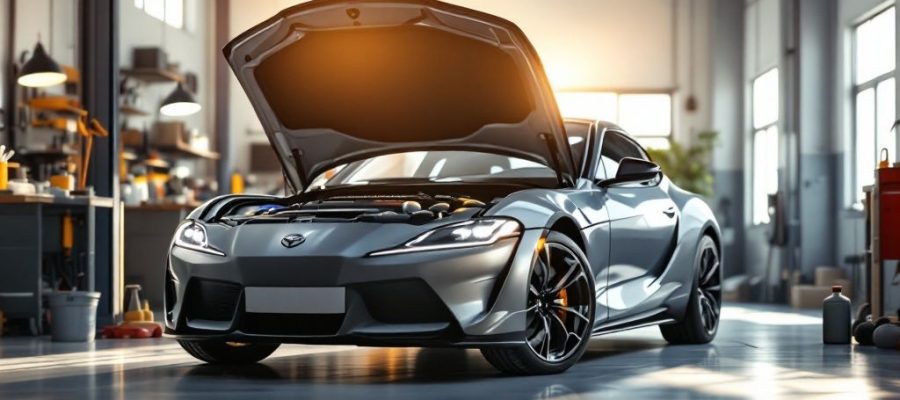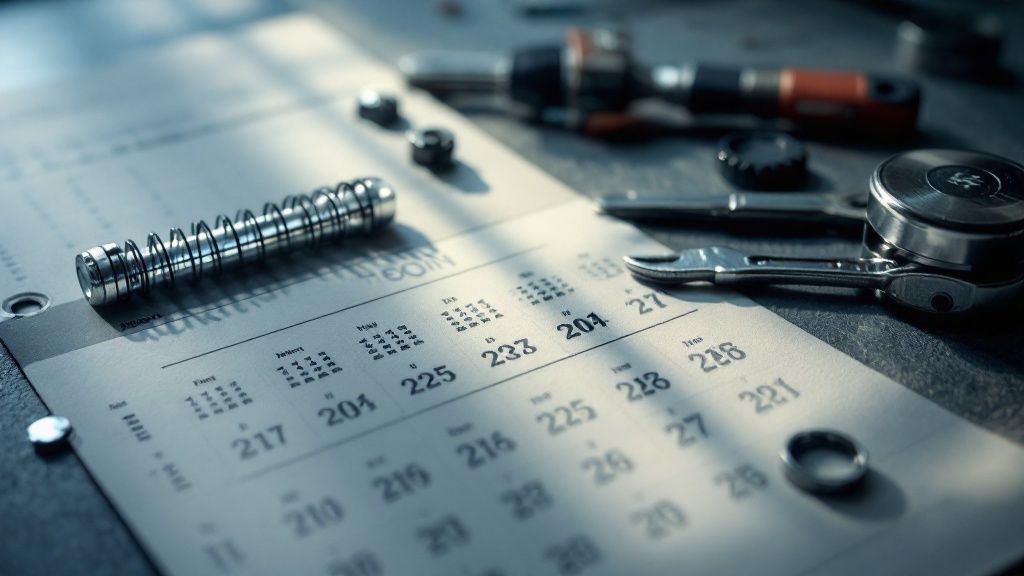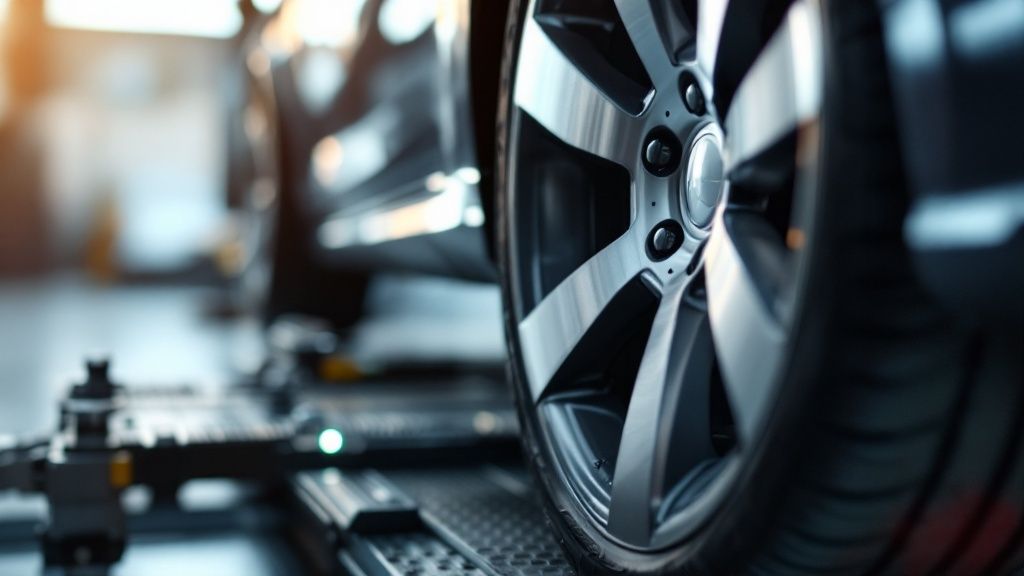

With the average price of a new car over $48,000, keeping your current vehicle on the road longer is a smart financial move. Proper maintenance isn't just a good idea; it's essential for your budget. Smart maintenance choices can add 5+ years to your vehicle's life, saving you significant money. This is especially true considering the continually rising costs of new vehicles.
Extending your car's lifespan has substantial financial benefits. Delaying a new car purchase by even a couple of years can free up tens of thousands of dollars. This money can be used for other financial priorities.
Think about investing, paying off debt, or even enjoying a vacation. This financial flexibility reduces the pressure of hefty auto loans and provides more financial breathing room. Plus, consistent upkeep minimizes unexpected and expensive repairs later.
Besides the financial advantages, there's a growing understanding of the environmental consequences of car production. A large part of a car's environmental impact happens during manufacturing. Extending your current car's life is an environmentally responsible decision.
Keeping older cars on the road reduces the demand for new vehicles. This, in turn, lessens the environmental burden of manufacturing. By keeping your car running longer, you’re contributing to a more sustainable future. This highlights the connection between personal choices and global environmental health.
A major factor contributing to extended vehicle life is the increasing average age of cars globally. As of 2024, the average age of vehicles in the United States is a record 12.6 years, an increase over previous years as drivers hold onto their cars longer. This trend isn’t limited to the U.S. Across the EU, the average age of vehicles rose from 10.6 years in 2016 to 12.3 years in 2022. Factors contributing to this change include the higher prices of new vehicles and uncertainty surrounding the move to electric vehicles. As a result, many people are choosing to maintain their existing cars for longer. Regular maintenance and proper car care are essential in minimizing the need for expensive repairs and maximizing the lifespan of vehicles. For further statistics, check out S&P Global Mobility.
Many cars have thrived well past 300,000 miles with consistent, careful maintenance. These real-world examples demonstrate the benefits of proactive car care. Achieving high mileage is possible with the right approach to maintenance. This demonstrates how dedicated maintenance contributes to vehicle longevity and reliability. By following these strategies, you're not only saving money but also helping the environment.

This infographic illustrates the positive impact of gentle acceleration and braking on a car's lifespan. Consistent driving habits contribute significantly to vehicle longevity. Just as mindful driving leads to a healthier car, a regular maintenance schedule is equally important.
Modern vehicles require proactive maintenance. Forget the old 3,000-mile oil change advice. Today's cars need a more tailored approach. Understanding the financial benefits of car maintenance is as important as minimizing costs in other areas of your finances, such as the impact of trading fees on investments. Let's explore a practical maintenance plan, broken down by frequency, to help you extend your car's life.
Tire Pressure: Correct tire pressure improves fuel economy and reduces tire wear. Check and adjust your tire pressure every week.
Visual Inspection: A quick weekly walk-around can identify minor problems before they escalate. Check for leaks, worn belts, or anything unusual.
These simple weekly checks offer substantial long-term benefits, preventing costly repairs and extending your vehicle's life.
Fluid Levels: Check your oil, coolant, brake fluid, and power steering fluid monthly. Low levels may indicate leaks or other issues.
Lights: Verify all lights are working correctly, including headlights, taillights, brake lights, and turn signals.
This monthly maintenance provides another layer of preventative care. Regularly checking fluids and lights helps you spot potential problems early.
Air Filter: A clean air filter is vital for engine performance and longevity. Replace it every three months, or more frequently in dusty environments.
Wipers: Worn wipers reduce visibility and compromise safety. Replace them every three months, or as needed.
Quarterly checks involve slightly more detailed maintenance. These checks focus on components that don't require constant attention but are crucial for long-term vehicle health.
Professional Inspection: An annual inspection by a trusted mechanic, like Kwik Kar of Mesquite, is crucial. This thorough check helps identify potential issues and ensures optimal vehicle performance.
Fluid Exchanges: Don't overlook regular transmission fluid, differential oil, and coolant exchanges. Consult your owner's manual for the recommended intervals. These fluids are essential for long-term vehicle health.
Think of an annual service as a comprehensive physical for your car. While weekly, monthly, and quarterly checks address immediate needs, the yearly inspection delves deeper, addressing potential problems before they worsen and saving you money in the long run.
The following table provides a helpful guide for maintaining your vehicle:
Essential Maintenance Schedule for Vehicle Longevity
This table outlines the recommended maintenance intervals for critical vehicle components to maximize lifespan.
| Maintenance Item | Recommended Interval | Impact on Longevity | Warning Signs of Neglect |
|---|---|---|---|
| Tire Pressure | Weekly | Improves fuel efficiency, reduces tire wear | Uneven tire wear, poor handling |
| Visual Inspection | Weekly | Catches minor issues early | Leaks, worn belts, unusual noises |
| Fluid Levels (Oil, Coolant, Brake, Power Steering) | Monthly | Prevents engine overheating, brake failure, and other problems | Low fluid levels, warning lights |
| Lights | Monthly | Ensures visibility and safety | Malfunctioning lights |
| Air Filter | Quarterly | Improves engine performance and longevity | Reduced engine power, poor fuel economy |
| Wipers | Quarterly | Maintains clear visibility | Streaking, squeaking wipers |
| Professional Inspection | Annually | Identifies potential problems, ensures optimal performance | Various warning signs, decreased performance |
| Fluid Exchanges (Transmission, Differential, Coolant) | As per owner's manual | Extends transmission and differential lifespan, prevents overheating | Rough shifting, overheating, leaks |
Regular maintenance, as outlined in the table above, is key to keeping your car running smoothly and extending its lifespan. By following this schedule, you can proactively address potential issues, saving money on costly repairs and enjoying a reliable vehicle for years to come.
The way you drive significantly impacts your car's longevity and your mechanic bills. Driving aggressively puts a strain on your vehicle's components, leading to faster wear and tear. Conversely, smoother driving can greatly extend your car's life. This translates to fewer trips to a trusted mechanic like Kwik Kar of Mesquite, lower repair costs, and more money in your pocket.
Smooth acceleration and braking are key to preserving your car's components. Think of it like this: gradual, controlled movements are better than sudden jolts. Hard acceleration stresses the transmission, while slamming on the brakes wears out your brake pads and rotors quickly. Gentle acceleration and gradual braking lessen the strain and contribute to a longer-lasting vehicle.
Just as you warm up before exercising, your car's engine needs time to reach its optimal operating temperature. A brief warm-up, particularly in cold weather, allows the engine to properly lubricate and prevents premature wear. Similarly, a cool-down period after a long drive, especially for turbocharged engines, helps prevent oil overheating and potential damage.
Frequent short trips can actually harm your car. Short drives often prevent the engine from reaching its ideal temperature, leading to moisture buildup and increased wear on parts like the starter and battery. If you mostly drive short distances, consider combining errands or occasionally taking a longer route to allow your engine to fully warm up.
Modern engines don't need extended idling. Excessive idling wastes fuel and contributes to engine wear. Starting your car and driving gently is the best way to warm up a modern engine, circulating the oil effectively and minimizing wear. Beyond the mechanical benefits, driving smoothly can boost fuel efficiency by up to 25%, saving you money at the gas pump. These savings add up over time, making a real difference for your finances. By adopting these mindful driving practices, you'll not only prolong your car's life but also improve its performance and protect your budget.
Making a car last longer begins with the initial purchase. The right vehicle choice significantly impacts how many miles you'll enjoy. Understanding factors like reliability, engineering, and vehicle history sets you up for long-term automotive success.
Not all car brands are equal in longevity. Some manufacturers are known for vehicles that stand the test of time. Choosing a reliable brand is the first step in maximizing a car's lifespan. Brand reliability is crucial. In 2025, Lexus, Buick, and Mazda topped reliability rankings, measured by problems per 100 vehicles. These brands consistently perform well, highlighting the importance of brand choice. The robust $430 billion automotive aftermarket in 2024 also plays a role, providing parts for older vehicles. Find more detailed statistics here.
Let's take a look at some of the most reliable brands and common issues that can arise even with well-built vehicles as they age.
To help illustrate the point, here's a table comparing some top brands for longevity:
Most Reliable Vehicle Brands for Longevity
| Brand | Reliability Score | Average Lifespan (Years) | Common High-Mileage Issues | Owner Satisfaction |
|---|---|---|---|---|
| Toyota | 95 | 15-20 | Oil leaks, oxygen sensor issues | 92 |
| Honda | 92 | 15-20 | Transmission problems, suspension wear | 90 |
| Lexus | 90 | 15-20 | Electrical issues, water pump failure | 95 |
| Mazda | 88 | 12-18 | Rust, sensor malfunctions | 85 |
| Subaru | 85 | 12-18 | Head gasket leaks, catalytic converter issues | 88 |
This table provides a general overview; specific model reliability can vary. Owner satisfaction also reflects long-term ownership experience.
Specific engineering choices contribute to durability. Consider timing chains versus timing belts. Timing chains last longer, reducing costly replacements. Similarly, naturally aspirated engines and turbocharged engines offer different lifespans. While turbocharged engines offer more power, they can be more complex and potentially problematic over time.
For used vehicles, a vehicle history report is essential. This report reveals past accidents, maintenance records, and title issues. Look for red flags: major accidents, inconsistent maintenance, or flood damage. These can signal potential long-term problems.
Minor specifications impact long-term reliability. Transmission type, suspension materials, and even the electrical system's quality play a role. Researching these factors before buying helps identify models known for durable construction. This is valuable whether you're buying a new car or maintaining your current one. Some models remain reliable beyond 150,000 miles with proper care. Evaluating brand reputation and engineering leads to choosing a vehicle built to last.
Environmental factors play a significant role in a car's deterioration, often more than we realize. Protecting your car from these threats can significantly extend its lifespan, impacting both its functionality and resale value. Just as websites need security against cyber threats, our cars need protection from the elements. For some digital security tips, check out Cybersecurity Basics.

The gold standard for car protection is covered parking. A garage shields your vehicle from the elements, preventing damage from sun, rain, snow, and hail. It also provides a more stable temperature, which is good for your car's battery and fluids.
Not everyone has garage access, so finding alternatives is key. If you have to park outdoors, a car cover offers a good level of protection against the elements. This simple step can contribute significantly to your car's longevity.
Different climates present unique challenges for car owners. In regions with harsh winters, road salt is a major culprit for rust and corrosion. Undercoating provides a protective layer for your undercarriage, shielding it from the damaging effects of salt.
In sunny climates, UV protection is paramount. Prolonged sun exposure can fade paint and damage interior materials. Using sunshades, regular waxing, and even a ceramic coating can help mitigate these effects. These measures protect your car's appearance and contribute to a higher resale value.
The market is full of car protection products. However, not all live up to the hype. Ceramic coatings offer superior protection compared to traditional waxes. They create a harder, more durable layer that repels water and dirt, while also providing excellent UV protection.
Undercoating, particularly in areas with road salt, is another valuable investment. It forms a barrier against corrosion, preserving the structural integrity of your vehicle. Do your research and choose a reputable provider like Kwik Kar of Mesquite for application.
Combining proper storage with region-specific protection and high-quality products is the best approach. This comprehensive strategy will extend your car's life, preserving its mechanical components and aesthetic appeal, ultimately impacting both reliability and resale value.
As automotive technology continues to advance, the factors influencing a vehicle's lifespan are also changing. This section explores the potential longevity of various vehicle types, including traditional gasoline-powered cars, hybrids, and fully electric vehicles (EVs). We'll examine how modern technologies in these vehicles impact their long-term reliability.
One of the primary concerns about EVs has always been battery degradation. However, advancements in battery technology are rapidly shifting this perspective. Improvements in vehicle technology, especially for EVs, have been remarkable. A 2025 study, using almost 300 million UK Ministry of Transport test records, showed that battery-powered electric vehicles now rival traditional cars in terms of longevity. TechXplore covered this topic in detail. Newer EVs are demonstrating lifespans comparable to internal combustion engine vehicles (ICEVs), averaging 18.4 years and 124,000 miles. This makes them a compelling choice for drivers looking for long-lasting vehicles. These rapid improvements are a direct result of ongoing technological advancements, establishing EVs as a practical option for long-term ownership.
Modern gasoline engines utilize technologies designed to boost efficiency, but these can sometimes prompt questions about their long-term durability. Features like start-stop systems, cylinder deactivation, and direct injection aim to improve fuel economy. Some drivers express concerns about the potential impact of these features on engine wear. However, with proper maintenance, especially regular servicing at a trusted shop like Kwik Kar of Mesquite, these systems are typically robust and don't significantly reduce engine life.
Whether you drive a conventional, hybrid, or electric vehicle, adapting your maintenance routine to these newer technologies is vital. This means following manufacturer recommendations for specific fluids, filters, and service intervals. For instance, EVs require unique cooling systems for their batteries, while direct-injection gasoline engines might need more frequent intake valve cleaning. Staying informed about these evolving maintenance needs is key to maximizing your car's lifespan. This proactive approach will significantly extend the life of your vehicle and minimize unforeseen repair expenses. For dependable maintenance and expert advice suited to your vehicle, consider consulting the professionals at Kwik Kar of Mesquite.
Keeping your car on the road longer doesn't always mean trips to the mechanic. Many important maintenance tasks can be done at home, saving you money and extending the life of your vehicle. This section covers some key DIY maintenance procedures that anyone can learn.
Regular fluid checks are vital. Fluids are essential for the proper function of your vehicle. This simple check can prevent significant problems later.
Ideally, perform these checks monthly.
Your engine needs a clean air filter to run efficiently. A clogged filter reduces engine efficiency and can damage internal components.
It's a good idea to replace your air filter every three months or as needed, particularly in dusty environments. A clean air filter can significantly improve your vehicle's performance and lifespan.
Correct tire pressure is crucial for safe driving, fuel efficiency, and tire life. Underinflated tires wear down faster and reduce gas mileage. Overinflated tires can result in a rough ride and increase the risk of blowouts.
Checking your tire pressure every week is a quick but important task. It greatly contributes to your car's performance, safety, and the life of your tires.
Your car's battery powers the engine and other accessories. Taking care of your battery helps ensure reliable starts and a longer battery life.
Regular battery checks are a good preventative measure. Ignoring your battery can lead to unexpected starting issues and a shorter battery life.
Learning these DIY maintenance tasks allows you to manage your vehicle's health and extend its life. While these simple procedures can make a big difference, professional service at a reputable shop like Kwik Kar of Mesquite is still necessary for more complicated issues. Schedule an appointment for expert service and advice.